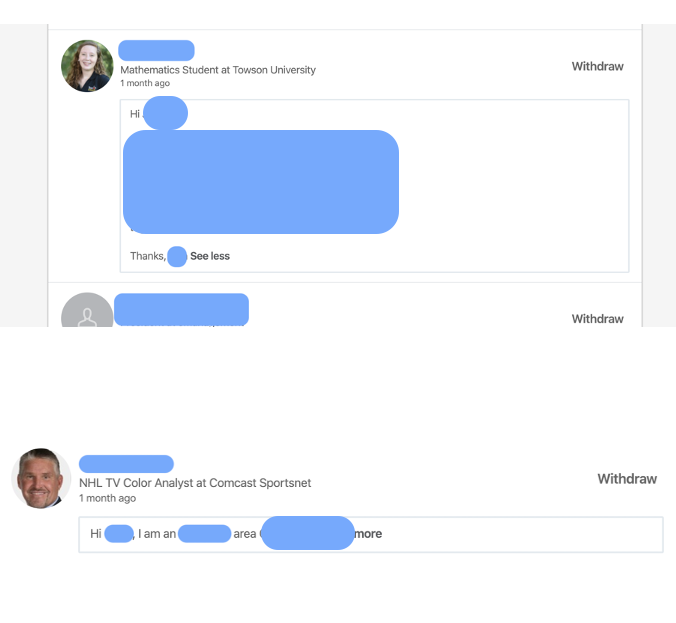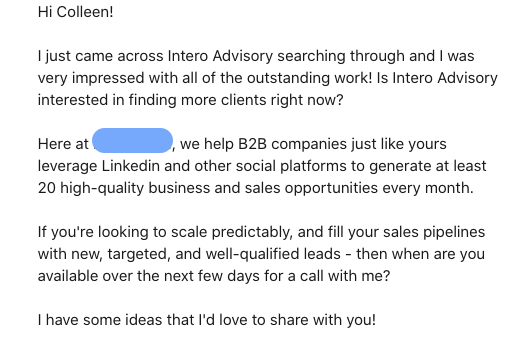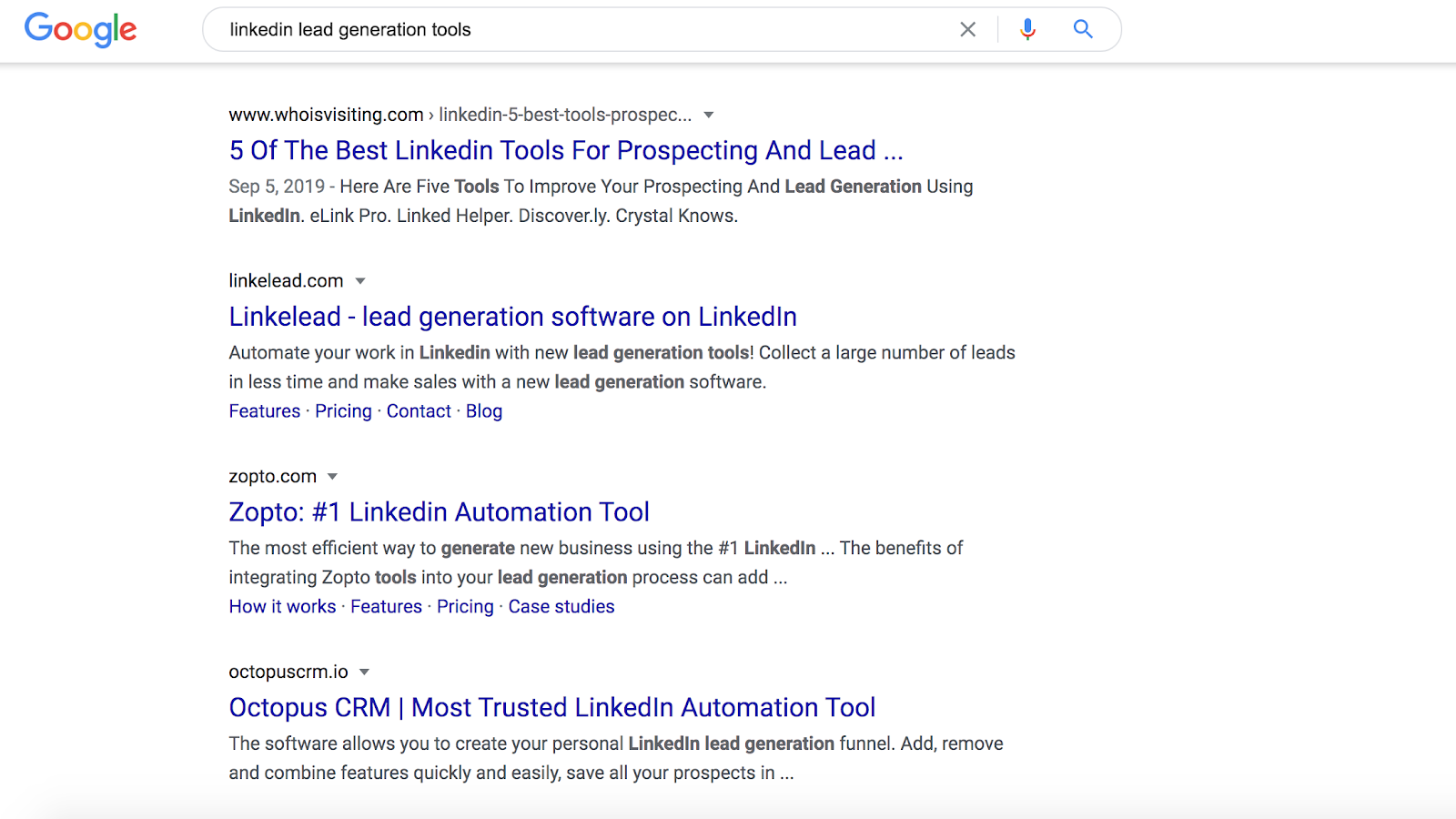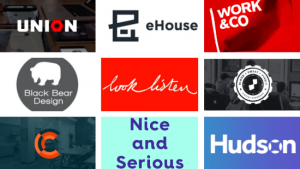Between emails, InMails, and connection requests, I receive a daily stream of questions about automating LinkedIn outreach.
I also receive invitations from others who can help me increase our lead generation efforts and results. I always wonder if they’ve looked at my profile. Probably not, otherwise they’d know that I’m not a likely prospect.
Knowing how to enhance or amplify LinkedIn for business development is among what we do. Staying current on potential apps and tools ensures we make recommendations that increase the effectiveness of our client’s LinkedIn strategy.
When it comes to LinkedIn outreach, automated tools are NOT among our recommendations.
Not too long ago, a client of ours was about to onboard a new client. The client had somewhere between $ 15k and $ 90k in potential lifetime value, and was lost because one of their colleagues was using automation and reached out to the same prospect. In the end, no one closed the business.
If you automate or are planning to automate your LinkedIn outreach, please read on.
Few teams spend time actually hand-selecting LinkedIn profiles for clients. Our team is one of those few. In 2020, we’ve sourced more than 40,000 C-level profiles. Between 2018 and 2019, that number was over 95,000.
The operative word is hand-selected. Is it slower, more complicated? Yes.
It also yields better results.
Why?
Automation presumes that LinkedIn’s searches are always correct, and that LinkedIn members add their information correctly to their profile.
Unreasonable assumptions.
How do I know these are not reasonable assumptions?
We see it first hand.
Often clients come to us after they’ve hired an outsourced LinkedIn lead generator or subscribed to an automation tool. Before we can implement our process, we have to clean out their networks and withdraw pending requests to people who probably saw the invitation, and wonder why it came their way.
Here are two examples of invitations that went to an intended CEO or President. Judge for yourself. While you may say that’s only two examples, we see this occur over and over again.

Here are two of several examples I’ve received.


We are not against ALL automation. In full disclosure we use Dux Soup (an automation tool). However, we never use it for visiting profiles, sourcing, or outreach. We strictly use it to minimize manual data entry from LinkedIn.
I have spoken with some of the developers of these automated tools, and they admit to the pitfalls of relying on data in LinkedIn to be accurate.
If we thought you could use automation successfully in LinkedIn we would be all for it. However, time and time again we see all the ways the results go wonky really fast.
Outsmarting LinkedIn?
LinkedIn and Microsoft have some of the most talented people in the world on their teams. That is NOT to say that others aren’t equally talented; however, most of the creators of the automated tools I’ve seen don’t have the resources to compete with LinkedIn and Microsoft.
It’s similar to trying to outsmart Google. It’s a futile attempt.

In a recent Google search, you’ll see all the tools, including those recommended by third parties.
Caveat emptor
You may want to review their claims regarding their success rates and their transparency about the data.
You use automation to increase the number of people you want to reach and make it easier on yourself. So, it’s all about you?
You may want to Google “customer journey” or “voice of the customer.”
Have you considered how you’ll come across to the person you want to talk to and buy from you? Do you even care?
Connections are people.
People buy, recommend, refer, influence, decide.
They also realize when they’ve received a canned message.
If you don’t care, then automation is right for you. If, on the other hand, you consider the other people worth knowing, then automating your LinkedIn outreach will feel cringe-worthy.
LinkedIn pays attention to your network and its relevancy. The more relevant your network, the better for you. Build a good network, a good community of professionals, and you position yourself to create opportunity.
Not interested in building a relevant network, just interested in profiles that may or may not be your ideal client or prospect, go for the automation and consider it the equivalent of the Yellow Pages.
Remember the Yellow Pages?
It’s always the process.
An organized and transparent process that considers how LinkedIn works and how most people fill out their profile is the key to better results.
Our best clients trust the process.
They understand why we included the steps we do and what we’re looking for before reaching out.
It doesn’t work for everyone, and, in the end, it’s about the person, their offering, and the value they create.
LinkedIn lead generation is more than a numbers game; it’s your entree to be known, respected, and worthy of someone’s business.
Once again, your approach is always a reflection of you.
Digital & Social Articles on Business 2 Community
(49)
Report Post







